Cycling the Aquarium
WHY IS IT IMPORTANT THAT I CYCLE MY DISCUS AQUARIUM?
Discus are delicate creatures requiring very clean water, and cycling your aquarium will help you achieve that. Cycling the aquarium helps your biological filters to work well. When the cycle is correctly completed, you can add ammonia at .5 ppm. and have a zero reading within 8 hours. Nitrite levels will not increase. Nitrate levels, however, will accrue, indicating a well-functioning biological filter. The well-functioning biological filter is the result of a cycled aquarium. Although cycling your aquarium requires some effort, it is worth it to have well-working filters. In this article, we’ll first briefly describe a common method of cycling discus aquariums, and then we’ll describe the less-common fishless method of cycling aquariums, which we highly prefer. We’ll explain this method in simple steps so that you can apply it to your aquarium.
White Leopard Discus
ONE COMMON METHOD OF CYCLING AQUARIUMS
Different methods are used for cycling aquariums. In one common method, people use a fish that can survive in an environment with high levels of ammonia and nitrites. Some fish stores recommend method because it can lead to more sales of goldfish and other tropical fishes. However, this method can take three or more weeks, risk bringing pathogens into your aquarium, and make the fish endure an uncomfortable ammonia- and nitrite-filled environment. In the following section, we’ll describe the fishless method, which is much for efficient and humane.
THE FISHLESS METHOD OF CYCLING A DISCUS AQUARIUM
This method has been used for decades. Here are the fishless method’s steps:
- Take all your fish out of your aquarium and put them in a different tank.
- Fill your discus aquarium with dechlorinated water. Do not use any chemicals that may remove ammonia. Set the heater to 88 degrees.
- Put pure cleaning ammonia (without additives) into the aquarium until you achieve a level of 5 ppm. of ammonia.
- To add the starter culture of nitrifying bacteria, add a commercial product having bacteria in it or some filter media from a healthy tank. Maintain the ammonia level of 5 ppm.
- Wait a few days. In a few days, ammonia level will drop, and nitrite levels will rise.
- When waiting for the nitrite levels to fall, you can continue adding ammonia at a level of .5 ppm. (half of one ppm) every two days.
- Lower the temperature of your discus aquarium to 86 degrees Fahrenheit. If you don’t have discus but are raising other tropical fishes, bring the temperature to the proper range.
- To remove the nitrates, do a water change.
Afterward, put your fish back in your aquarium so that your filter bacteria will receive an adequate supply of food. Your fish naturally produce ammonia that will feed the filter bacteria. If you will not be adding fish for several days to your cycled aquarium, add a low dose of ammonia to feed the bacteria. When the ammonia level reaches zero, add another dose. If you go this route of adding ammonia, be sure to change the water prior to adding your discus to your aquarium.
Cobalt Blue Discus and Yellow Diamond Discus
QUESTIONS
- Why is it important that you cycle your aquarium?
- Why is the fishless aquarium cycling method used?
- What other things do you do to make your tank clean for your discus?


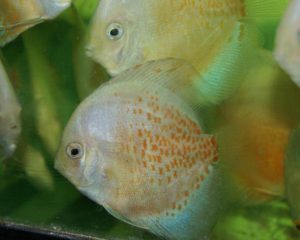
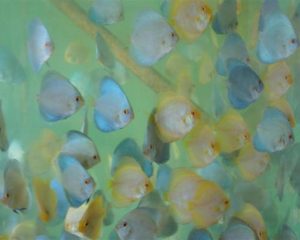
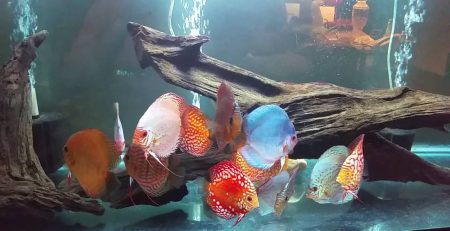
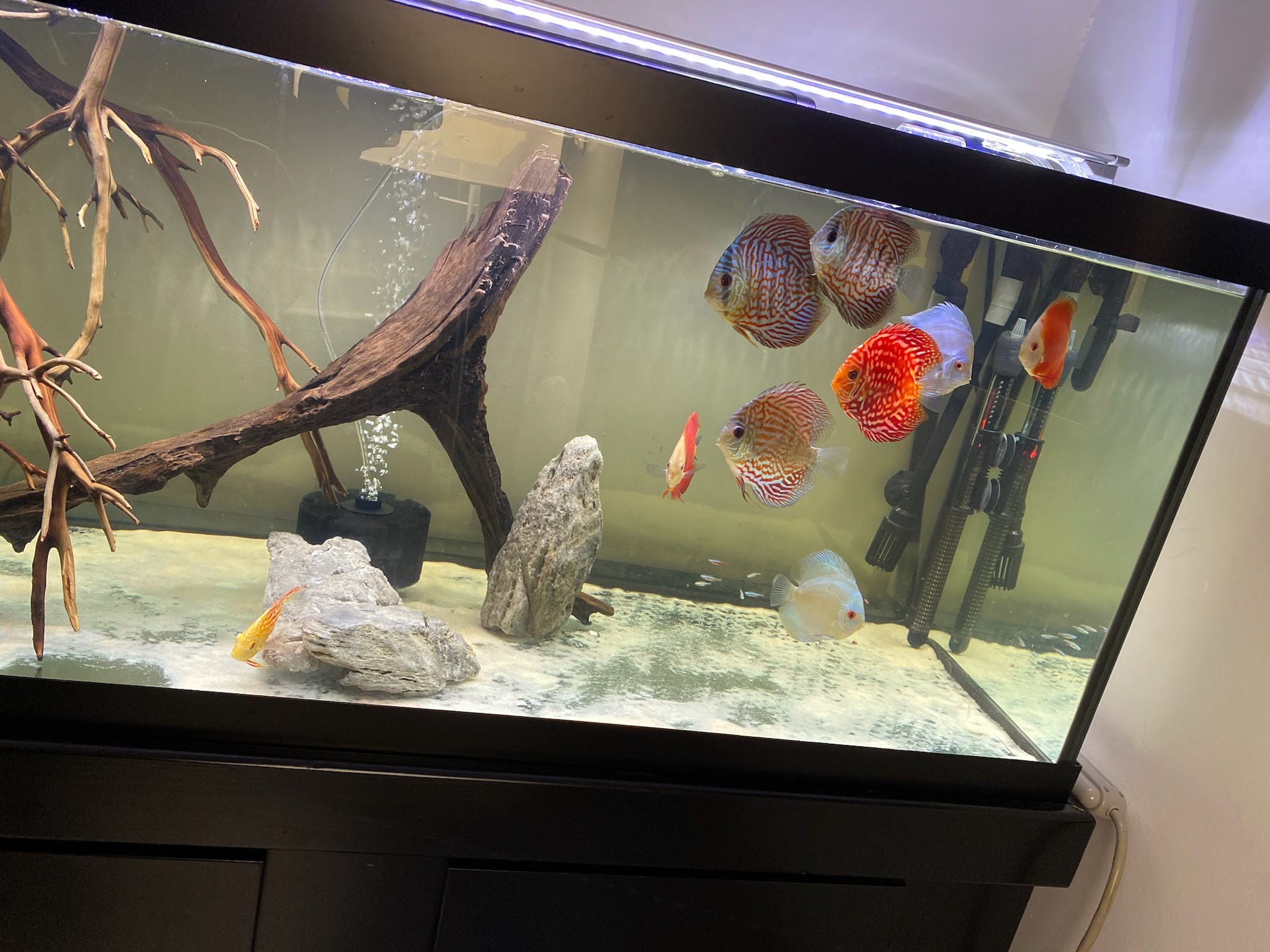

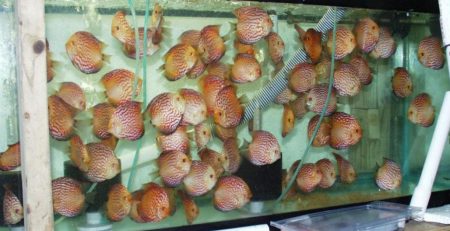
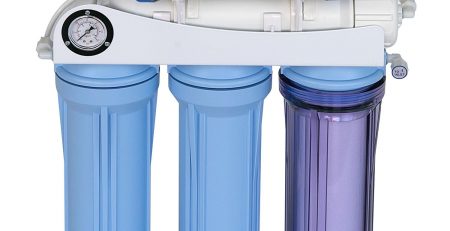
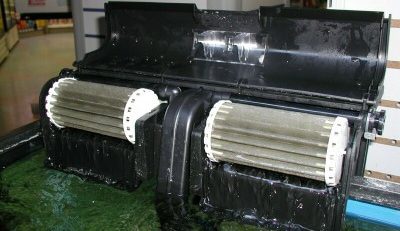
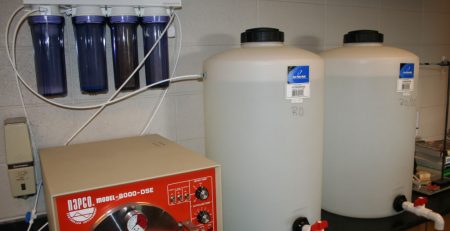
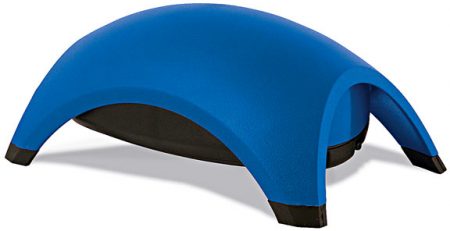
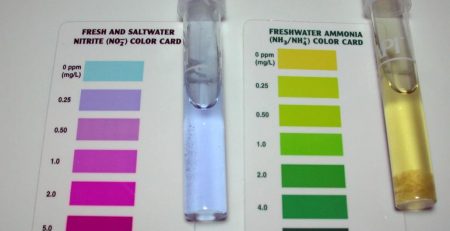
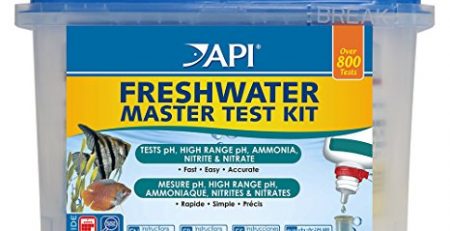
Leave a Reply
You must be logged in to post a comment.